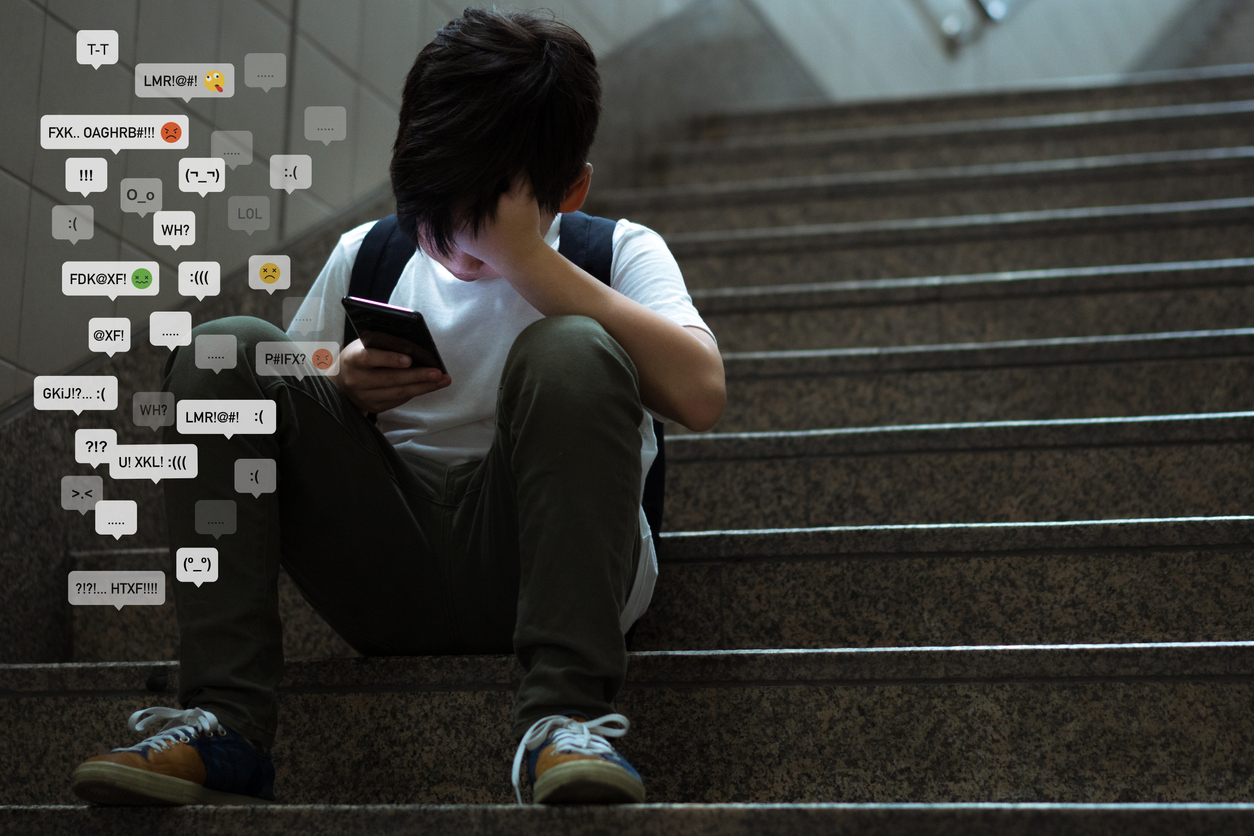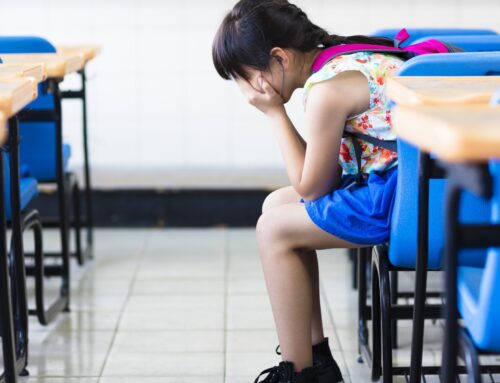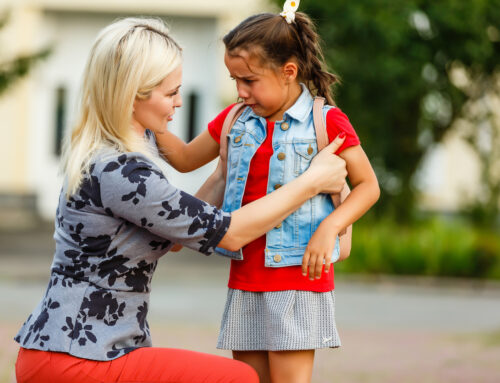
Pew Research Center reported back in 2020 that “two-thirds of parents in the U.S. say parenting is harder today than it was 20 years ago.” Why? Many said the struggle is due to technology, particularly social media or smartphones.
Keeping children safe and mentally healthy is harder than ever now that screens are literally at our fingertips. The online world is full of a whole new set of dangers. Four or five decades ago, parents and teachers contended with traditional bullying and the occasional playground fight, but now, on top of that, they are coming to realize the prevalence of cyberbullying.
Cyberbullying began back in the 1990s as soon as computers became a household item. It began on messaging platforms with people harassing teens under pseudonyms. Now cyberbullying can happen on dozens of other apps and websites such as multiplayer games like Call Of Duty, or social media platforms like Twitter, Snapchat, TikTok, or Facebook. Not surprisingly, Instagram is the number one platform for cyberbullying.
Social media isn’t going away, and many parents aren’t going to go so far as to ban devices altogether. So how do we make sure our kids are safe?
What Is Cyberbullying?
First, we must understand what cyberbullying is and how to identify it. The National Library of Medicine defines cyberbullying as an “aggressive intentional act carried out by a group or individual, using electronic forms of contact, repeatedly and over time against a victim who cannot easily defend him or herself.”
If a child is bullied at school or in his neighborhood, there’s a chance that he will be bullied by the same people online. A bully only has to do a quick search for his victim on social media. According to this Google survey, teachers believe that cyberbullying is the top online issue for kids in the classroom. Being bullied publicly online for the rest of their school to see can be especially painful for a child.
Cyberbullying can also be done anonymously by total strangers or by someone your child knows personally who is using a fake or secondary account.
Bullying is harassment, and harassment is more than just a joke or a single solitary incident. According to these stats, “mean comments” are the leading form of cyberbullying, followed by spreading rumors, sexual remarks, and sharing private communications or photos without consent. Many kids are bullied about their appearance or disabilities. Some kids even receive outright threats from bullies online.
Cyberbullying incidents can even go viral, which opens a can of worms no teen should have to cope with. A child could even be “doxed,” a term often used to refer to exposing someone’s address or school.
The Effects of Cyberbullying on Kids
Very Well Family points out that today cyberbullying has surpassed bullying as the most common type of harassment. But just like traditional bullying, cyberbullying has a negative mental effect. Cyberbullying is closely linked to suicide attempts and can lead to substance abuse, like any other trauma. But the more common effects are depression, anxiety, and low self-esteem.
Since bullying is often perpetrated by a child’s peers, your child or student could suddenly stop enjoying going to school or being with his friends. If a child doesn’t want to go to school anymore, or attend certain school or social events, it could be a sign that she’s being bullied online.
If a child stops enjoying their screen time or avoids scrolling on social media, there’s a good chance she’s experiencing negative treatment. A teen might even start blocking a lot of his friends on social media or delete his profiles altogether. Be on the lookout for signs like these.
Cyberbullying creates feelings of vulnerability in children. After all, it’s almost like having a bully with you in your home, all day, every day. Being bullied is a big burden for children and teens to bear. Cyberbullied kids need the comfort and protection of an adult. They especially need their parents and teachers to take action.
How We Can Protect Our Kids
Reach Out says “Only around 1 in 10 young people inform a parent or trusted adult of cyberbullying. Some reasons for this low number include embarrassment, fear of not being believed, fear of having the issue trivialized, or losing access to technology.”
Kids should be able to trust their parents, of all people, to be on their side when cyberbullying is happening. So start establishing that trust. Talk to your child early on about the risk of cyberbullying and have her report any bullying behavior she experiences (either aimed at herself, or other people) to you right away.
Then take steps to stop bullying before it happens. Maybe that means not allowing your child to have a personal smartphone before he’s 16, or restrictions on what apps, social media, and games he is allowed to have.
Also, consider installing a parental control app, which can help alert you to any harmful activity on your child’s devices or restrict your child’s device in any way you feel is necessary. There are also apps that can educate you and your kids about cyberbullying and offer helpful resources if cyberbullying is occurring.
Know your state’s laws and your child’s school’s policies on cyberbullying. Cyberbullying.org has a great interactive map and other resources to help you find this info quickly.
As a parent, internet safety can seem like a daunting goal. But, remember that you are your kids’ best safety net, and there are actually many things you can do to prevent cyberbullying from affecting your child’s life.
Cyber Safety in the Classroom
Schools and teachers may choose to teach internet safety in the classroom by incorporating it into the curriculum. Common Sense Education has an entire lesson plan created for just that purpose. You can also find worksheets at Cyberbullying.org. Schools can also move toward safety by creating strict anti-bullying policies that address cyberbullying as well as traditional bullying, and striving to create a positive school culture.
Most importantly, get parents involved. PTA meetings, school board meetings, and school events are good places to raise awareness for cyberbullying. As parents learn to raise their kids in a technologically saturated world, they need to know there are teachers out there who are concerned and ready to cooperate to find solutions.
And if you find out that a student is being bullied online, you can take action. Just keep in mind that “school, district, and/or state policies might dictate what actions you take once you’ve verified that cyberbullying has in fact occurred,” says Common Sense. “Sometimes the recommended response is different depending on whether the bullying occurred on a school-issued device or not and whether it happened outside of school hours or during the school day.”
Safety In A Connected World
Kids are online more than ever before. According to one study, during the COVID-19 pandemic cyberbullying increased by 70%. And online education is only becoming more popular. We’re just beginning to understand the dangers and consequences that come along with our children’s screen-filled lives. Many of these pitfalls seem to be linked to mental health. And as we’ve seen, cyberbullying is one of the biggest hazards to kids’ mental health in our day.
Kids can’t battle cyberbullies on their own. They need support and protection from people who love them and who are willing to step up and take action on their behalf.




